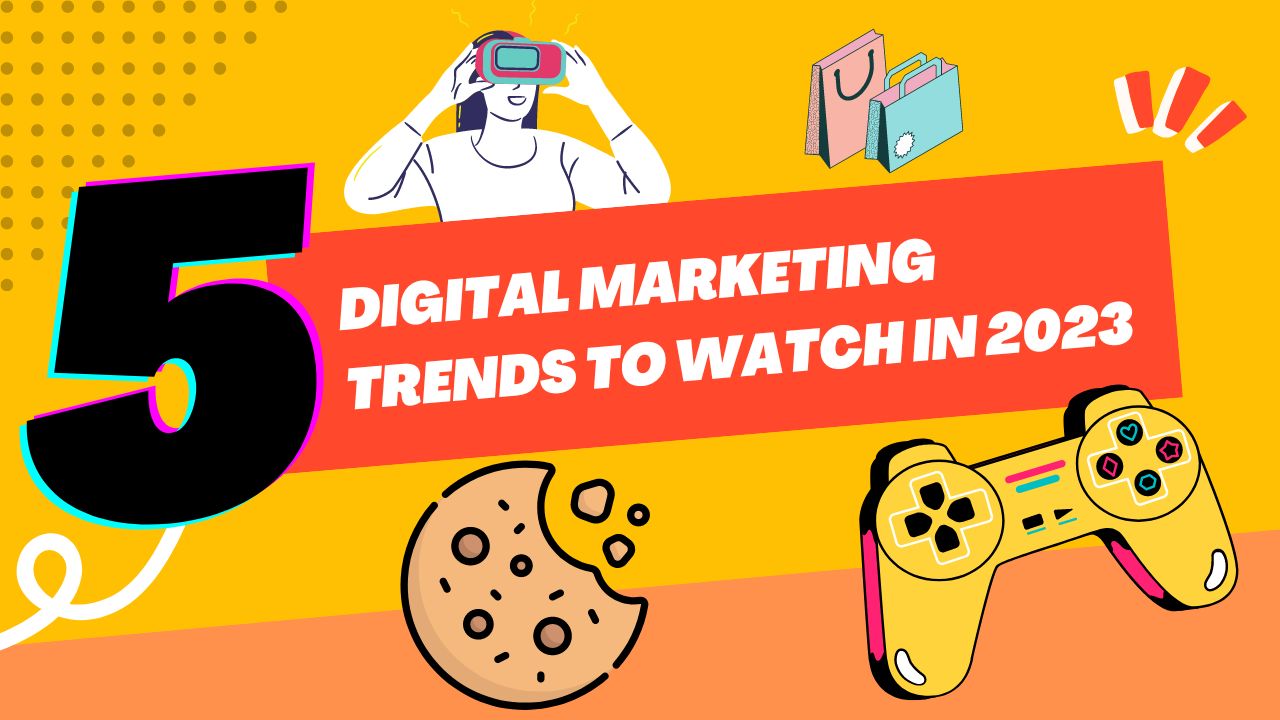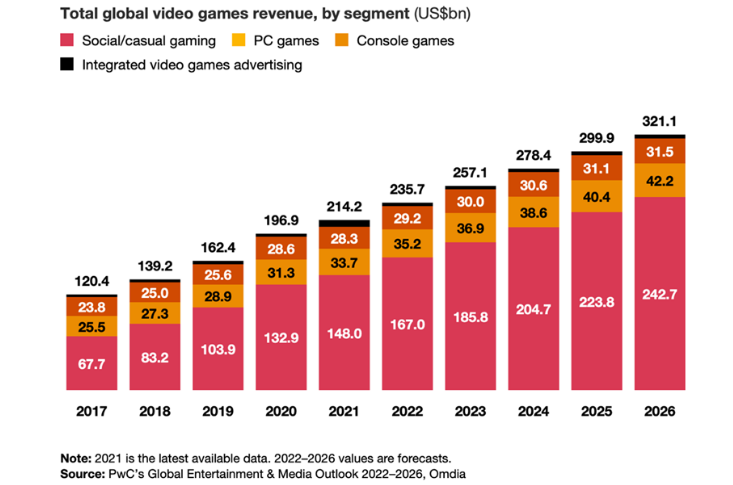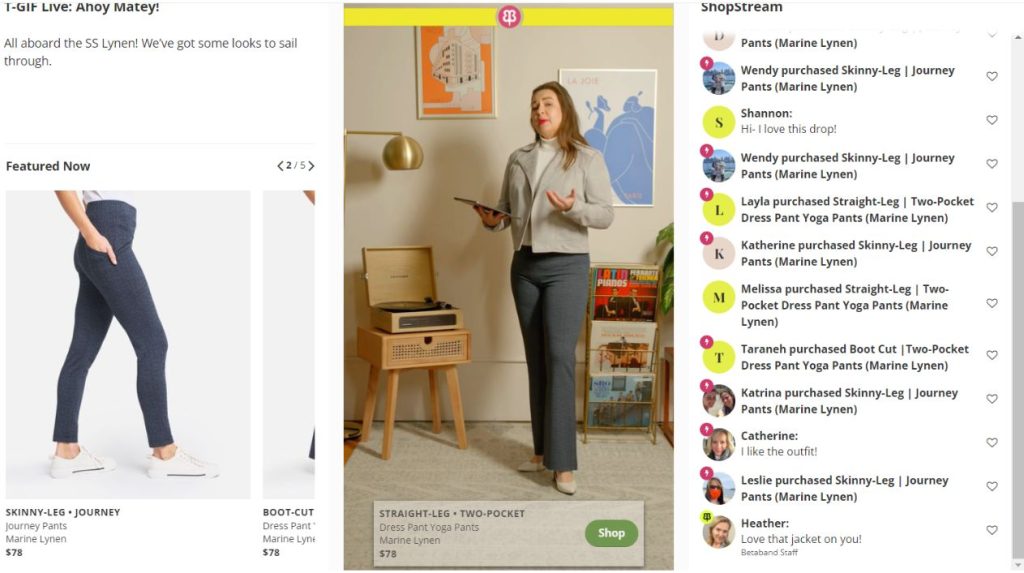
The global digital landscape is continuously and relentlessly evolving. Every aspect of the industry is constantly changing and digital marketers have no choice but to keep up.
On a macro level, there are several major trends that will shape the way we experience digital marketing in the coming years.
So, here are the top five digital marketing trends to watch in 2023.
How will they impact your business?
GAME CHANGER: The Explosive Rise of Generative AI
AI tools had been around for years, but everything changed when OpenAI launched ChatGPT in November 2022.
Many in the industry, including us at Metric, were not prepared for the explosive growth of generative AI tools nor the rise in the number of AI marketing experts on LinkedIn.
Most SEO and PPC specialists have been aware and even using tools like Jasper or Wordhero. IBM has been selling Watson to enterprise clients since 2010. And the Eliza chatbot, which is considered the first use of generative AI, was created by Joseph Weizenbaum all the way back in the 1960s.
Although OpenAI rose to prominence in 2022 its journey began in 2015 as a non-profit. The organization was formed with the financial backing of Silicon Valley heavy hitters such as Greg Brockman (former CTO of Stripe), Sam Altman (partner at Y Combinator), Reid Hoffman (co-founder of LinkedIn), Peter Thiel (co-founder of Paypal), and Jessica Livingston (founding partner of Y Combinator).
In fact, Elon Musk donated $100 million and was a co-chair of OpenAI between 2015 and 2018.
Companies such as AWS, Infosys and YC Research also pledged their support and in January 2023 Microsoft pledged to invest $10 billion into OpenAI.
How does Generative AI work?
The simplest explanation is that Generative AI uses a data set of content to train its model to create new, unique and original output that was not in the original dataset.
For example, Descript will use a recording of your voice as a data set to train its algorithm to create text-to-speech output that sounds like your voice.
DALL-E and Midjourney use generative AI to create new and original images.
The prompt: “This man as a French militiaman. He wears a dark blue military uniform, beret, light blue shirt, and black tie underneath a long dark blue military coat. he holds a gun in his hand. Keeps the exact same face. 1943. France. Cinematic lighting. –v 5 –q 2 –s 750 -”
The output:

Generative AI applications
Today, the number of AI and machine learning tools has increased exponentially and there are many use cases where they can be applicable. Here are just a few examples of AI tools that you can use right now!
Text enhancement and content creation
Image generation
Collaboration
Video
Audio & Voice
Legal
Note taking and transcription
Coding
Ethical and legal issues with Generative AI
Although the rise of generative AI is viewed positively, there are serious issues that need to be addressed.
Data privacy and consumer protection
Consumers need to have protections when AI tools include their image, voice or biometric data in one or more data sets. This is why we do not recommend uploading your voice or image to any AI tool until there are adequate legal protections in place.
Deepfakes
This is already a controversial issue. Even now, AI tools are sophisticated enough to reproduce your voice and image. In the future, it will become increasingly challenging to distinguish a real video from a deepfake.
Copyright
There are two issues related to copyright with AI.
The first issue is that many generative AI tools scrape content from the web to train their algorithms. In other words, they use copyrighted material without permission. Yes, some tools do scape only images that are licensed under CreativeCommons, but there is a lack of truthful transparency in how the current models work. The creators of the content used in the data set were not compensated for their work and may have legal grounds to pursue compensation, as they should.
The second issue is the copyright of content produced by AI tools. In February, 2023 the U.S. Copyright Office wrote in a letter that images created by Midjourney cannot be copyrighted because there was no human authorship. However, the book itself could be copyrighted.
It will take more legal precedents to establish how copyright is applied to works created by AI.
SEO
Another major issue is how Google and other search engines will treat AI-generated content. Currently, Google treats AI generated content as any other. The company’s position is that AI and automation have always had a role in how content is created and, thus, there is no reason to ban AI-generated content. Instead, they will create barriers for low-quality and spam content.
Google’s ranking systems aim to reward original, high-quality content that demonstrates qualities of what we call E-E-A-T: expertise, experience, authoritativeness, and trustworthiness. We share more about this in our How Search Works site.
Our focus on the quality of content, rather than how content is produced, is a useful guide that has helped us deliver reliable, high quality results to users for years.
– Google Search’s guidance about AI-generated content [link]
However, we’ve run into issues where AI-generated content was flagged for plagiarism, which brings into question whether AI tools can create truly original content and/or if the systems to detect AI content are sophisticated enough. It remains to be seen.
Conclusion
Generative AI and machine learning will fundamentally impact how we work and live. It is likely to lead to disruptions in many industries. Some of these changes will lead to higher productivity and better work life balance, while others will result in job loss and stagnation of employee compensation.
1. Metaverse’s hype cycle is over already
The metaverse has been around for decades, but it was given new life after Mark Zuckerberg made it a priority for Facebook (now Meta).
Many of us remember Active Worlds, Second Life, or even the Sims as examples of metaverse-like experiences.
Beyond these proto-metaverse examples, let’s not forget immersive MMORPGs like World of Warcraft, Final Fantasy XIV, and going way back to Runescape.
Simply put, the jump to the metaverse should not feel as scary as some may think.
Looking at the current iteration of the metaverse concept, there are boundless opportunities to create worthwhile and impactful brand experiences.
There are many places where such metaverse experiences can exist. For example, many brands and artists have embraced platforms such as Sandbox, Decentraland, Spatial, Roblox, and others.
However, there are several significant barriers to the mass adoption of metaverse as a reality:
- High cost of VR equipment. A Sony PlayStation VR headset will set you back $349.99, while a top-of-the-line HTC Vive Pro 2 goes for $1,295.95
- The high cost of real estate in places such as Decentraland and Sandbox makes it challenging for smaller brands to establish a foothold
- Crypto and NFT’s poor reputation because of scams can turn off some consumers from embracing the metaverse.
Despite these barriers and challenges, the metaverse has a lot of potential as a digital touchpoint. The unfortunate issue with the metaverse is that it got caught up in the hype cycle.
Metaverse Fashion Week on Decentraland
In March 2022, Decentraland hosted the first-ever Metaverse Fashion Week. The Web3 event featured over 61 brands including Dolce & Gabbana, Etro, Elie Saab, Imitation of Christ, and many more.
During the Fashion Week event Forever 21, Philipp Plein, and Estée Lauder all opened their first-ever stores in Decentraland’s Fashion District.
Additionally, the event also featured 34 guest panelists from the fashion and apparel industry.
 You can find more about the event here.
You can find more about the event here.
Vans World on Roblox
2. Gaming & Streaming
The global gaming market is valued at $198.40 billion and is expected to grow to $339.95 by 2027 according to Mordor Intelligence. According to PwC, the gaming market grew by 26% between 2019 and 2021. Some, but not all, of this growth can be attributed to the pandemic.

These high estimates make sense when you consider that 67% of all American adults, those 18 years and up, play games, while 76% of kids, those under 18 years old, are also gamers.
An important aspect of gamer culture is streaming.
According to Twitch, in 2021 viewers and streamers generated:
- 1.2 billion minutes watched
- 8.7 billion unique creators streaming each month
- 2,808,000 average concurrent viewers
- 106,100 average concurrent streamers
According to an analysis by Newzoo, the competitive e-sports market will hit $1.6 billion in revenue by 2024 and reach a global audience of 577.2 million people (casual and enthusiasts). 44% of all e-sports revenue will be generated in China.
All this data is great, but how can brands engage gamers?
First, let’s look at how NOT to do it.
Coca-Cola’s misfire
The major sin in Coca-Cola’s attempt is the brand’s complete lack of awareness and understanding of the competitive e-sport scene. No self-respecting e-sports player would act this way in a massive tournament. There’s far too much money and pride at stake, to throw the game like that.
Furthermore, the “fake” video game resembles the aesthetics of World of Warcraft: Battle for Azeroth, which is an MMORPG with a very small e-sports scene and was poorly received by the WoW player base.
Instead, a MOBA (Multiplayer online battle arena) like Dota 2 and League of Legends or a game like Fortnite would have been more appropriate choices.
Unsurprisingly, the comments under the video are viciously funny.

“this is the equivalent of watching a football game but then both teams stop playing with the ball, throw down their shirts and preach to the crowd who spend their hard earned money to watch which team would win in a match to say “Yo guys… we need to learn about… world Peace, Fun is a waste of time… we need.. to change the world, through soda” – nerdycookiegirl

“I appreciate the effort that went into this spot. Not only all the CGI budget, but also how they went through great lengths to NOT involve anybody who has the slightest clue about gaming in this project.” – Falk Ebert

“The cringe is so strong in this one, it actually cured my soda addiction.” – Kondziu Rybka

“My sympathies to all the lower level creatives involved who knew this thing would bomb, and yet whose bosses didn’t listen.” – CMYK

“This is Probably one of the reasons why Youtube wants to remove the Dislike Button…” – Alvin John Pacifico

“I would think that Coke, one of the largest global brands in existence would have at least taken the time to do research into what esports actually look like before giving this the greenlight for production. I’m actually speechless.” – J. Arnold
Danone hits the bullseye with their Small Hunger campaign on Twitch
Danone partnered with some of the biggest Fortnite streamers in Poland for their Small Hunger campaign.
Small Hunger is the anti-hero of Danone’s Danio brand. His quirk is that he always shows up when somebody is hungry
With this in mind, VMLY&R created an algorithm that would trigger an ad every time the streamer’s in-game character dropped health points. And Instreamly reached out and engaged the perfect streamers for the campaign.
Read more about the image recognition algorithm used for the campaign by checking the full case study.
KFC’s Animal Crossing
At the height of the COVID pandemic, KFC opened up a digital restaurant in Animal Crossing.
They gamified the experience further by giving their Facebook fans a chance to win a free bucket of chicken if they could spot Colonel Sanders in Animal Crossing.
Ferrari Comes To Fortnite
The major takeaway
There are many ways brands can engage gamers. They can create streamer tournaments, work with influencers on sponsored streams and so much more.
However, the biggest prerequisite is having respect for the culture and being authentic to the audience.
3. TikTok’s explosive growth will continue, but for how long?
TikTok has experienced exceptional growth. The app is predicted to reach over 1.8 billion monthly active users (MAUs) by the end of 2023.
Things look even better when we look at the more granular stats.
- TikTok has one of the most engaged users. According to SensorTower, 29% of TikTok’s users open the app every day, which puts it in close competition with Instagram’s 39% daily open rate.
- Globally, users spend an average of 95 minutes on TikTok, which is well ahead of all other social platforms, including YouTube (74 min. per day) and Instagram (51 min. per day).
- 60% of TikTok’s users in the US are Gen Z (born between 1997 and 2012). In 2023, TikTok is projected to have 45 million Gen Z users, while Instagram will have approximately 37.3 million users.
- According to a leaked TikTok pitch deck (source is paywalled), the app is opened 19 times per day on average.
Naturally, the platform’s growth will slow down. Statista estimates that by 2024, TikTok’s growth in the US will drop to just 5.1%.
YouTube has recently revamped its monetization of YouTube shorts, which will make it far more lucrative to create content there rather than on TikTok.
More importantly, will TikTok curb organic reach for brands and users? We hope not.
One of the biggest reasons for TikTok’s success is the inherent virality of the content on the app. Getting views on YouTube or getting social engagement on Facebook and Instagram has been incredibly difficult.
These platforms have continuously changed their algorithms to effectively make it nearly impossible to go viral.
Today, Facebook provides minimal organic reach. YouTube’s algorithm prioritizes watch time, frequent uploads, high thumbnail click-through rates, monetization, and other complex factors to decide which videos will go viral.
However, TikTok’s approach creates a feedback loop that rewards users with engagement when they post content. Unlike YouTube, TikTok allows users to freely use licensed music.
So, it is no wonder that so many Gen Z users have flocked to the platform.
How can brands engage their audience on TikTok?

- Brands need to act as a creator rather than as a business
- Put your audience’s entertainment first, leave the selling for last
- Stay up-to-date on trends and important hashtags
- Put out content consistently
- Users are engaged by authenticity rather than by a high-production value
- Collaborate or sponsor TikTok influencers, but don’t stifle their creativity
- Don’t do this.
Morning Brew
@morningbrew
Washington Post
@washingtonpost Leaders across the Commonwealth, an association of 56 nations, expressed sadness over Queen Elizabeth II’s passing. But many of those countries, former outposts of the empire, have also been engaged in a public reckoning over the legacies of colonialism, including calls for atonement, reparations and independence.
Dunkin Donuts
@dunkin How tho?🎃 #pumpkin #pumpkinszn #fall #dunkin #pumpkinspicelatte
4. Shoppable livestream content is the logical next step for online retail
China has been at the forefront of livestream shopping for years. The trend began more than a decade ago when Chinese influencers would livestream their shopping experiences in New York and Los Angeles.
- According to eMarketer, livestream e-commerce in China generated $300 billion in retail sales in 2021 and is on track to generate $623.29 billion in sales by 2023.
- By 2023, livestream e-commerce in China will account for 19.4% of all retail sales in the country.
- The US livestream e-commerce is expected to grow to just $25 billion by 2023 according to Coresight Research (source)
Betabrand is a great example of a company that has embraced shoppable livestream as a sales channel.
Since 2021, they have consistently produced 10 livestreams per week.

The reason why shoppable livestreams are so successful and what sets them apart from QVC-style shopping is the sense of community.
Brands like Betabrand and platforms like TalkShopLive or Ntwrk not only build vibrant communities of shoppers but also gamify the experience.
For example, all purchases made are highlighted in the chat for social proof. Not only that, but buyers receive a GIF in chat to thank them for their purchase.
Viewers of shoppable livestream content can influence the show through polls or by sending direct messages.
5. A cookie-less future will further increase the value of first-party data, SEO, and email marketing
Everyone is certain that we are moving towards a true cookie-less future. However, nobody knows when that reality will hit us. In July 2022, Google once again delayed the scheduled deprecation of third-party cookies from 2023 to the second half of 2024.
This demonstrates how entrenched third-party cookies are in our digital advertising ecosystem and how difficult it is to find a suitable replacement.
However, most players in the programmatic space have been working on and rolling out their own identity solutions.
For example, The TradeDesk and LiveRamp have deployed Unified ID 2.0, which uses Apple’s Identifier for Advertisers (IDFA), Google’s Advertising ID (AAID), and the user’s logged-in email to identify a user.
Then, there are other options such as ID5, Merkel Merkury ID, IdentityLink Consortium (IDL), and Authenticated Traffic Solution (ATS).
After the demise of 3rd party cookies and until a universal identity solution fills the gap in terms of targeting capabilities, brands will need to find effective ways of reaching, engaging, and selling to their audiences.
This reality will increase the value of 1st party data, email marketing, and SEO.
Even before the announcement of the end of 3rd party cookies, the holy grail of digital marketing was first-party data.
First-party data is the information that you collect directly from consumers: their name, address, email, phone number, and all the interactions you’ve had with them.
First-party data allows a high degree of personalization across nearly every digital channel, but especially via email.
To leverage first-party data brands have to use:
- Customer Relationship Management (CRM)
- Customer Data Platform (CDP)
- Data Management Platform (DMP)
The value of SEO will also increase as a result of the demise of third-party cookies.
If brands find it harder to accurately target consumers through paid advertising, they may look to increase their organic traffic instead.
Conclusion
The world is unpredictable and so is digital marketing. Trends come and go.
Companies rise and fall.
Great talent is laid off in droves and great projects sputter.
Consumers embrace fads for a while and then discard them like yesterday’s papers.
Brand marketers don’t need to try everything all at once, but they need to have an open mind to new opportunities and a collaborative mindset to work with creators and agencies.






